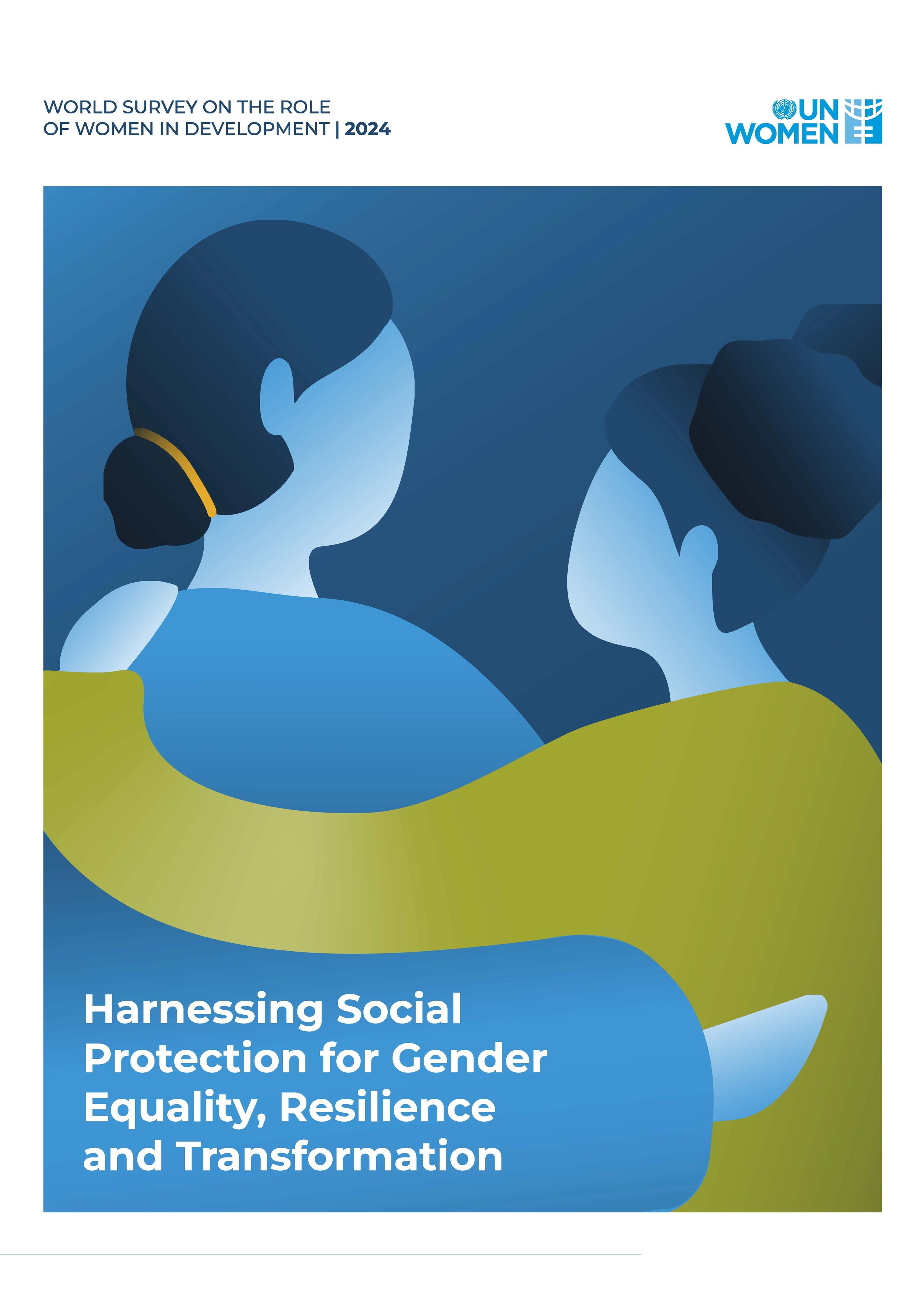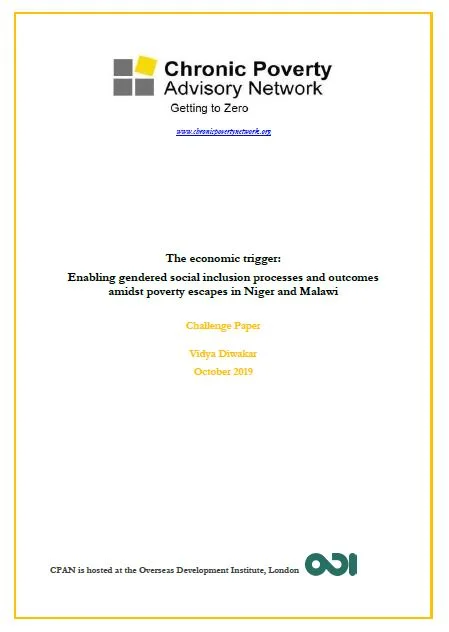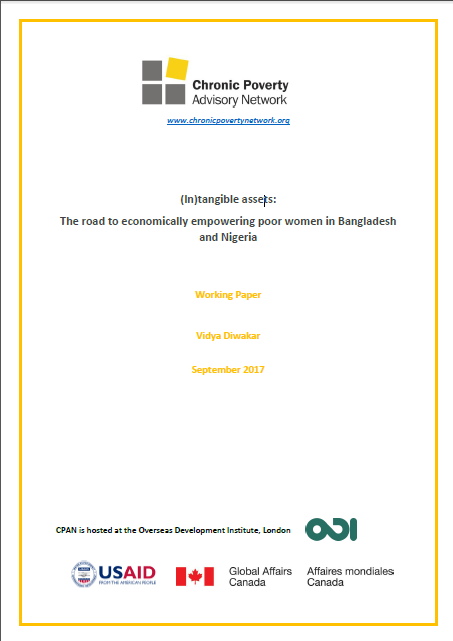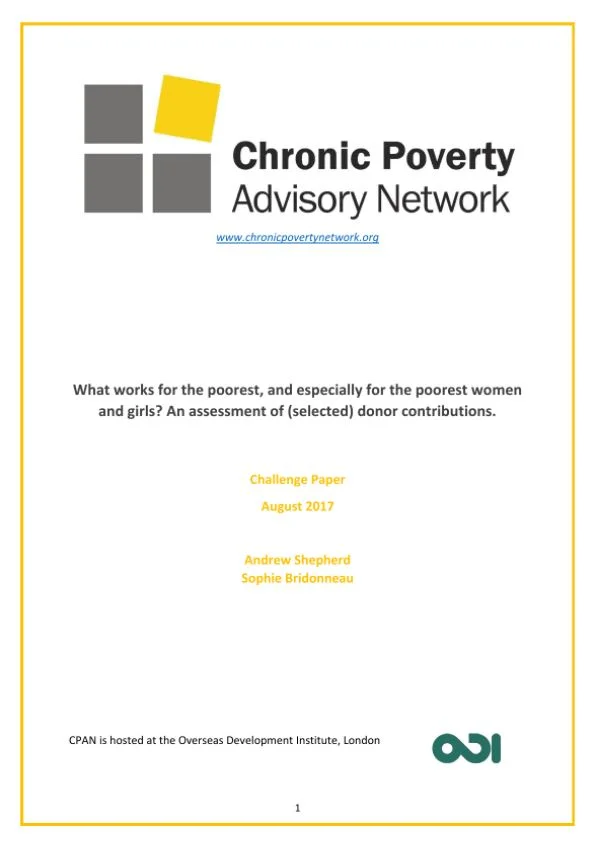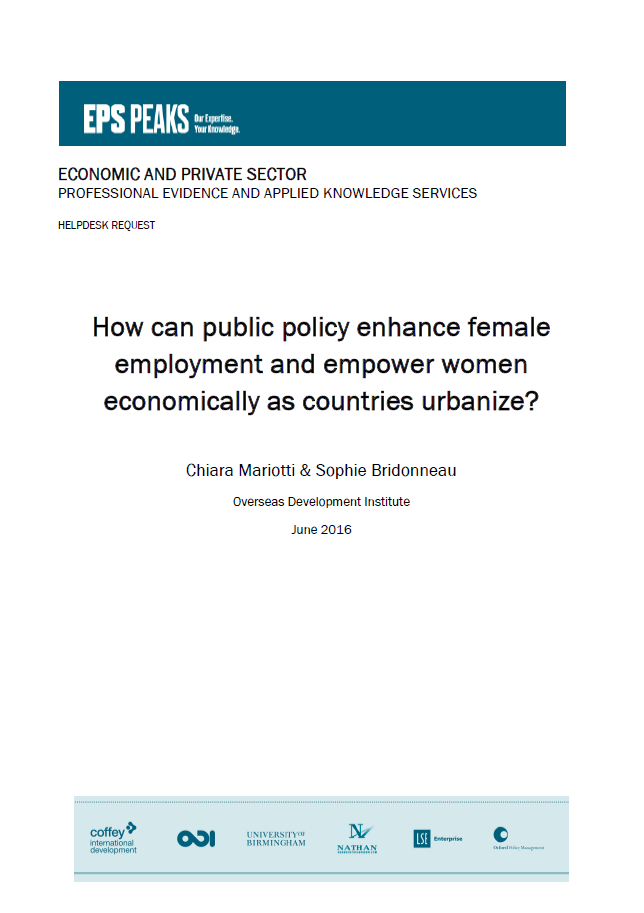The Sustainable Development Goals have a new emphasis on reducing inequalities and on leaving no one behind in international efforts to eradicate extreme poverty and deprivation. The challenges faced by the poorest people are often multifaceted and complex, and so, not surprisingly, isolated or single interventions are unlikely to make much difference: it is combinations and sequences of interventions that will generally be needed.
Donors have a varied record on whether their investments and policy dialogue is intended to benefit the poorest people, particularly on the poorest women and girls. Whilst it has proved possible to come at this through a poverty lens, as poverty strategies are usually gender-differentiated, and anti-poverty interventions may focus specifically on women or girls, and even those that do not may benefit the poorest women. But this has rarely happened through a gender equality or women’s empowerment lens.
This challenge paper provides the latest analysis of development policies and programmes that work best for the poorest people – particularly the chronically poor. The paper has a particular focus on the poorest women and girls, about whom there is much less evidence. It also focuses on the work carried out by a number of leading donors, assessing the extent to which they attempt to reach the poorest, and among them the poorest women and girls.
Click here to download the paper
Authors: Andrew Shepherd, Sophie Bridonneau


